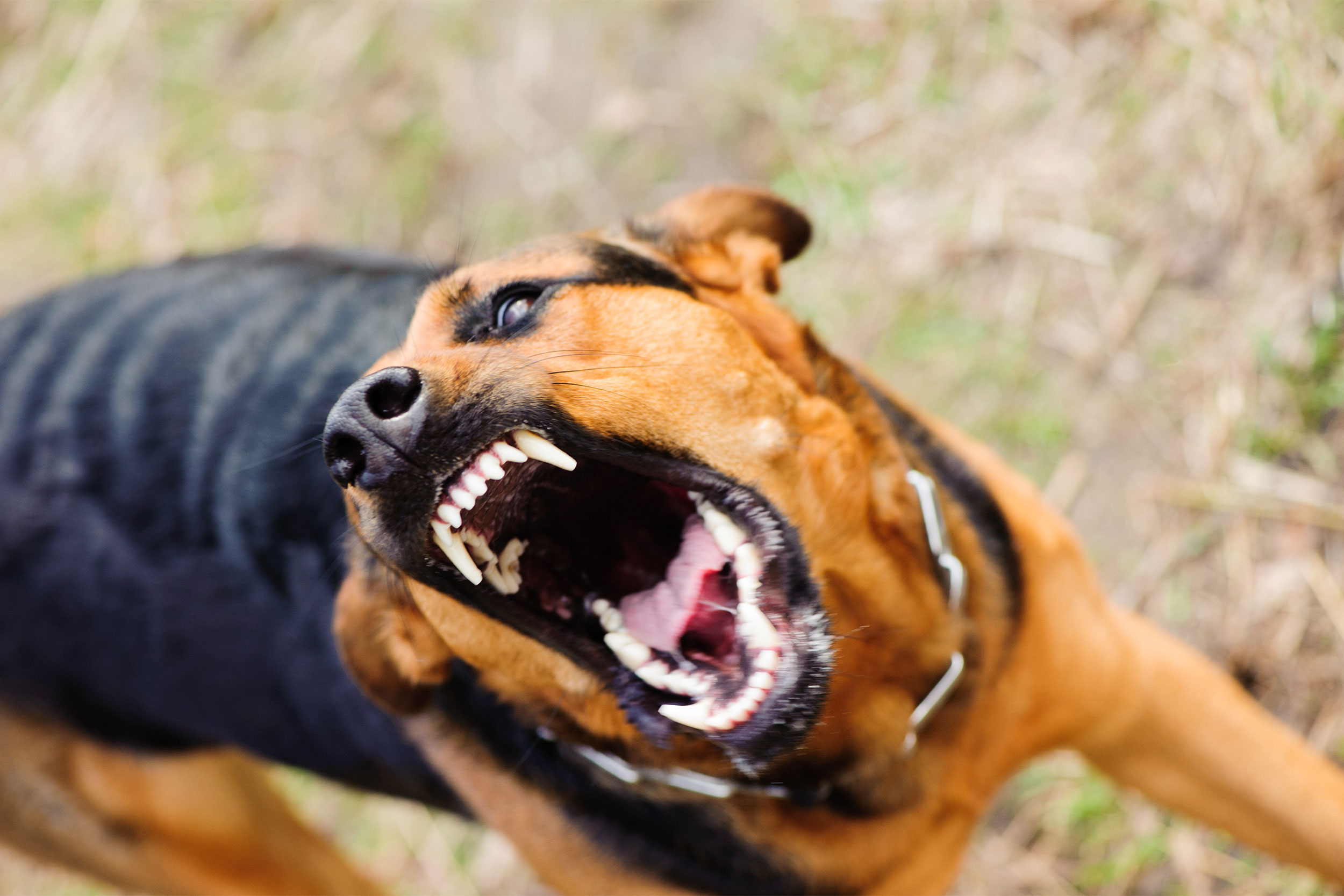
Keep the dog cool
Bites increase as the temps rise, study finds — and maybe you’re partly to blame?
Science has shown that violence among monkeys, rats, and mice increases when the weather is warm. Now it seems we can add dogs to the list.
New findings from researchers at Harvard Medical School and Spaulding Rehabilitation Hospital show that the incidence of dog bites rises with the temperature. In an analysis of 69,525 cases in eight U.S. cities, the team found that dog bites increased 3 percent on days with high ozone pollution, 4 percent on days with higher temperatures, and 11 percent on days with elevated ultraviolet radiation, a marker of increased sunshine.
Clas Linnman, an assistant professor of physical medicine and rehabilitation at Harvard Medical School and Spaulding Rehabilitation Hospital, was an author on the paper. We asked him about the team’s key findings in a conversation edited for clarity and length.
Q&A
Clas Linnman
GAZETTE: Does this work show that dogs are just like us in the summertime — cranky when the weather gets hot and uncomfortable?
LINNMAN: Probably, but one needs to keep in mind that the interaction between humans and dogs is crucial to reduce dog bites.
GAZETTE: Are the results limited to warm-weather months?
LINNMAN: No. In sensitivity analysis, we found that the effect is actually somewhat stronger in winter months.
GAZETTE: Doesn’t that negate the finding that bite risk rises on hot, sunny, smoggy days?
LINNMAN: No. We are looking at the relative risk on warmer versus cooler days, so, if you only look at winter months, the effect of temperature on risk is still there, and even somewhat stronger. This does not mean that the risk is higher on winter vs. summer days. It means that the effect is still present if you remove the hottest days from the analysis.
GAZETTE: You found that rising temps, ozone levels, and UV radiation are linked to a higher rate of dog bites. Is it just discomfort or are there biological reasons behind the phenomenon?
LINNMAN: We know from animal studies that the HPA axis — the brain’s hypothalamic pituitary adrenal axis, important in responding to stress — is impacted by these factors, and there is some evidence suggesting a change in striatal dopamine turnover with exposure to ozone. But there is a lot of work needed to understand how these phenomena may work in dogs and humans.
GAZETTE: How might dopamine influence aggressive behavior?
LINNMAN: Dopamine is involved in short-term rewarding behavior, or impulsivity, and while reward is typically associated with pleasant things, aggression is often impulsive and can also be short-term rewarding, so we think there may be a link.
GAZETTE: So together, we know that temperature, ozone, and UV affect parts of the brain responsible for stress responses and perhaps lowers inhibition to aggression?
LINNMAN: We cannot really conclude that just yet, but we are looking into both behavioral and neuroimaging data to see if there are subtle effects of these factors.
GAZETTE: The study found an effect from one common summertime pollutant — ozone — but not another, the tiny damaging particles in PM 2.5. What accounts for the divergence?
LINNMAN: Great question. Short-term PM 2.5 has been linked to aggression in humans in multiple studies, so we were expecting to see it here as well. It is possible that anatomical differences between snouts and noses play a part.
GAZETTE: You also found that an increase in precipitation reduces aggression. Why might that be?
LINNMAN: Dogs love to run in the rain! It may be as simple as fewer interactions between humans and dogs on rainy days.
GAZETTE: How well does this agree with what’s been found in humans and other species?
LINNMAN: It fits quite well into the picture. People are also more aggressive with higher temperature and air pollution. There are even studies demonstrating higher rates of violent crime downwind of major highways, and this shifts when the wind shifts.
GAZETTE: There’s also an indication in the journal article that the effects may be related to the way humans interact with dogs on hot days.
LINNMAN: We don’t have the type of data needed to assess the behavior of the victim in these reports. But dogs typically do not bite without some type of provocation, and they usually warn us first, so the behaviors of the human may be a factor.
GAZETTE: Have you ever been bitten by a dog?
LINNMAN: Yes, actually, once in an aggressive situation.
GAZETTE: What happened?
LINNMAN: I love dogs, I grew up with several family dogs, although I am currently not a dog owner. I was parking my bicycle as my neighbor walked by with her dog, and perhaps it was the bike that triggered it to bite me. It was nothing serious, gave me a bruise and put a hole in my T-shirt. Maybe it was a hot, smoggy day. I do not recall.
GAZETTE: As we come into the summer months, any advice for dog owners?
LINNMAN: Keep your dogs happy, cool, and under control. And learn to read the behavior of dogs — that is probably the most protective thing one can do. Most bites occur with dogs we know.





